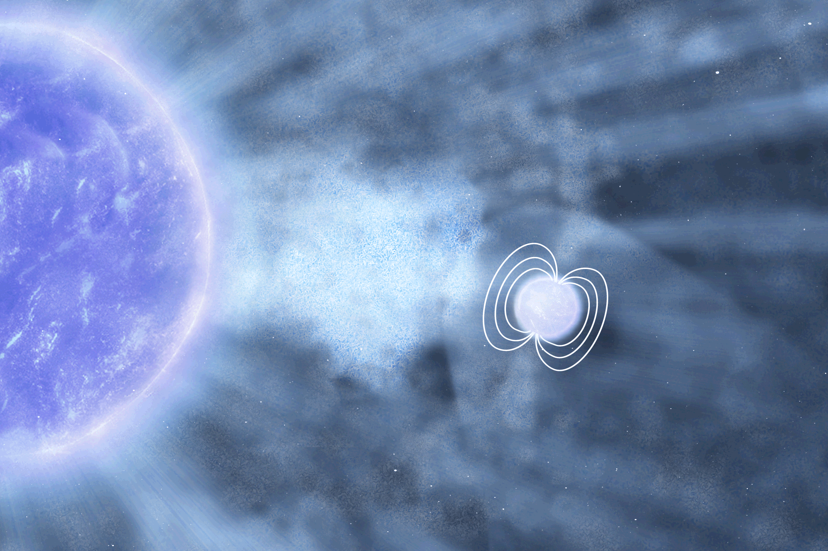Tiny Cannibal Star Blasts Out Four-Hour Superflare

Talk about indigestion: A tiny neutron star erupted in a four-hour superflare recently after trying to gobble up a huge blob of matter spit out by its giant companion star.
The neutron star— the collapsed, ultra-dense heart of a formerly much larger star — blazed up at 10,000 times its normal brightness in X-ray wavelengths, researchers said. The European Space Agency's XMM-Newton space observatory detected the outburst.
The neutron star, known as IGR J18410-0535, is about 6 miles (10 kilometers) wide. It flared up after being swamped by a huge cloud of matter emitted by its blue supergiant companion star, researchers said. [Video: Giant Star Shoots Matter at Neutron Neighbor ]
"This was a huge bullet of gas that the star shot out, and it hit the neutron star, allowing us to see it," research team leader Enrico Bozzo, of the University of Geneva in Switzerland, said in a statment.
The scientists estimated that the cloud belched out by the blue supergiant star was about 10 million miles (16 million km) across. It would take about 100 billion of Earth's moon to fill up that space, but the cloud was not very dense, researchers said. It only contained only one-thousandth the mass of the moon, they added.
The four-hour superflare actually occured after the cloud erupted from the supergiant. That's when the neighboring neutron star pulled some pieces of the cloud into its own intense gravity field.
The gas in the clump was heated to millions of degrees in the process, causing the bright X-ray emission, researchers officials said.
Get the Space.com Newsletter
Breaking space news, the latest updates on rocket launches, skywatching events and more!
An X-ray flare of this magnitude can be expected a few times per year at most for this particular star system, Bozzo said. He and his colleagues thus feel fortunate that XMM-Newton captured the event in its entirety.
"I don’t know if there is any way to measure luck, but we were extremely lucky," Bozzo said.
The spacecraft's observations should help astronomers understand the behavior of the blue supergiant and the way it emits matter into space, researchers said.
All stars (including our own sun) expel atoms, creating a stellar wind. The X-ray flare shows that this particular star does it in a clumpy fashion, and the size and mass of the cloud may allow constraints to be placed on the process.
Follow SPACE.com for the latest in space science and exploration news on Twitter @Spacedotcom and on Facebook.
Join our Space Forums to keep talking space on the latest missions, night sky and more! And if you have a news tip, correction or comment, let us know at: community@space.com.

Space.com is the premier source of space exploration, innovation and astronomy news, chronicling (and celebrating) humanity's ongoing expansion across the final frontier. Originally founded in 1999, Space.com is, and always has been, the passion of writers and editors who are space fans and also trained journalists. Our current news team consists of Editor-in-Chief Tariq Malik; Editor Hanneke Weitering, Senior Space Writer Mike Wall; Senior Writer Meghan Bartels; Senior Writer Chelsea Gohd, Senior Writer Tereza Pultarova and Staff Writer Alexander Cox, focusing on e-commerce. Senior Producer Steve Spaleta oversees our space videos, with Diana Whitcroft as our Social Media Editor.









